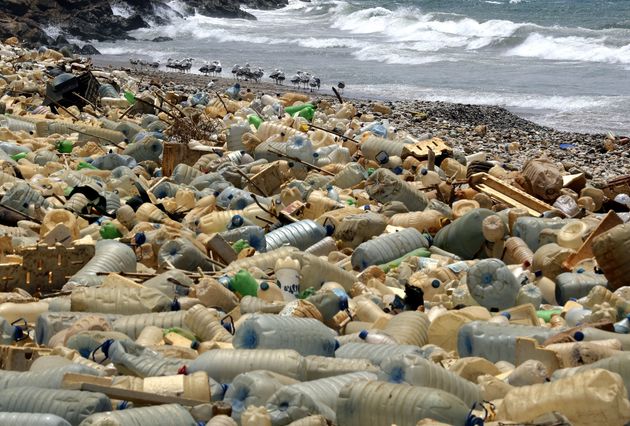
When you see something shocking, you can’t simply un-see it (as much as you’d like to). It swirls in your mind, vying for attention as your brain tries to process it and make sense of what your eyes have just witnessed.
This is what happened when those disturbing images of plastic-wrapped wildlife and country-sized floating islands of plastic were first presented to us, the public, by the media: we wanted to un-see it. We didn’t want to believe it. It took a moment to sink in… and then we wanted to get it out of our oceans, pronto.
Currently, over five trillion pieces of plastic litter our oceans; five huge circular currents or ‘gyres’ swirl in the sea, churning this waste round and round like a giant toxic soup. One of these gyres labelled the ‘Great Pacific Garbage Patch,’ is apparently three times the size of France. It covers an area of 1.6 million square km and comprises at least 1.8 trillion pieces of litter. The first-ever United Nations Ocean Conference in 2017 warned that if we don’t act now, the sea will contain more plastic than fish by 2050. It’s a sobering thought.
Our plastic obsession is destroying our sea life. Over 100,000 marine creatures and 100 million birds are killed each year as a direct result of plastic debris in the ocean – either by becoming trapped in it or eating it, and 50% of sea turtles have plastic in their guts, and 90% of seabirds (often over 200 individual pieces).
Suddenly, the world is listening, and the operation to clear up our oceans has finally begun in earnest. Now, myriad organisations have been set up with the aim of removing plastic from our seas, educating people about the impact of littering our planet, and changing lax attitudes towards single-use plastic. One such company is Plastic Oceans, who is on a mission to change the world’s attitude towards plastic within a generation. They say: “The problem of plastic pollution is growing exponentially every year; we are producing more than 300 million tons of plastic, half of this designed for single use, and each year around eight million tons of it ends up in our oceans.”
I wonder, what did we use before the plastic boom?
As a child of the 70s, I recall fruit, vegetables, and sweets being displayed loose, to be hand-selected then sold by weight in brown paper bags. Fish and chips were wrapped in greaseproof paper, not polystyrene trays. We would take our soft drink bottles back to the corner shop for reuse, a small refundable deposit on offer by way of incentive. People shopped locally and bought fresh, visiting the greengrocer and the butcher, rather than ordering online and having everything delivered wrapped in plastic. The milkman left our milk on the doorstep each morning – in glass bottles, not plastic. Empties were left on the doorstep for collection. Casting my mind back to a bygone era evokes wistfulness, a hankering for simpler times. Is “progress” actually that? I wonder.
So, what can we do? Sign this petition by Friends of the Earth to put pressure on our Government to act. As well as rejecting single-use plastic, you can help save our oceans by recycling at home and on-the-go (and encouraging others to do so), carrying a reusable cloth shopping bag (oh how we grumbled about the introduction of the 5p plastic carrier bag), and participating in litter collections. Avoid purchasing anything wrapped in plastic wherever possible – choose loose fruit and veg. Don’t buy plastic-bottled water on the go, carry your reusable filter bottle. Use it at home also, instead of drinking polluted tap water.
Like a message in a (glass!) bottle that’s slowly circumnavigating the globe, bobbing along on a filthy tide, the memo is finally being read. Can we fix our global plastic problem and clean up our oceans? If we all work together on a global scale, anything’s possible – although scientists estimate it will take at least 450 years. Time will tell. Our success will be measured by our successors.
I guess they’ll have to sea it to believe it.
Blog: Life: A Bird’s Eye View Twitter: @SamanthaWalsh76 (lifeabirdseyeview) Facebook: @lifeabirdseyeview Instagram: @lifeabirdseyeview